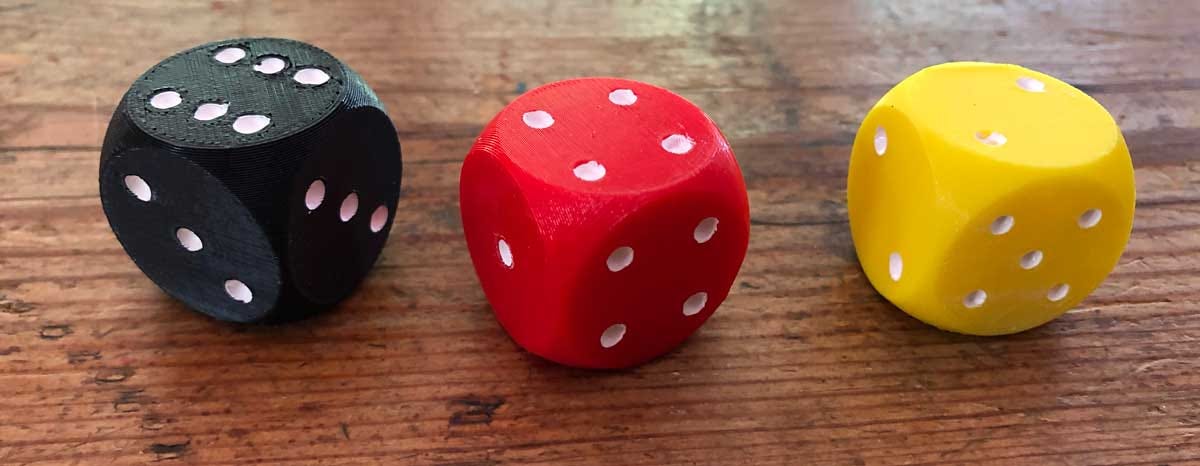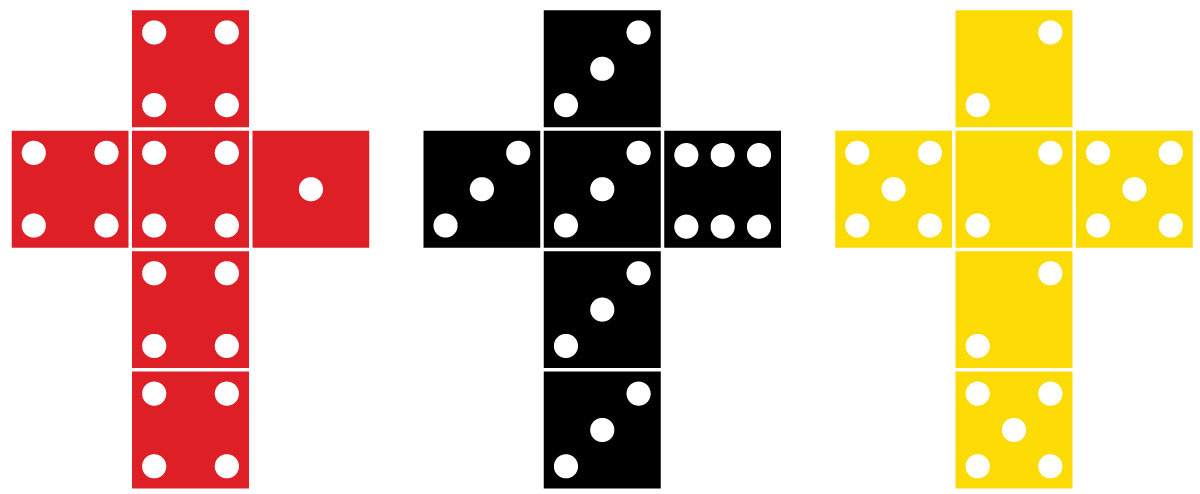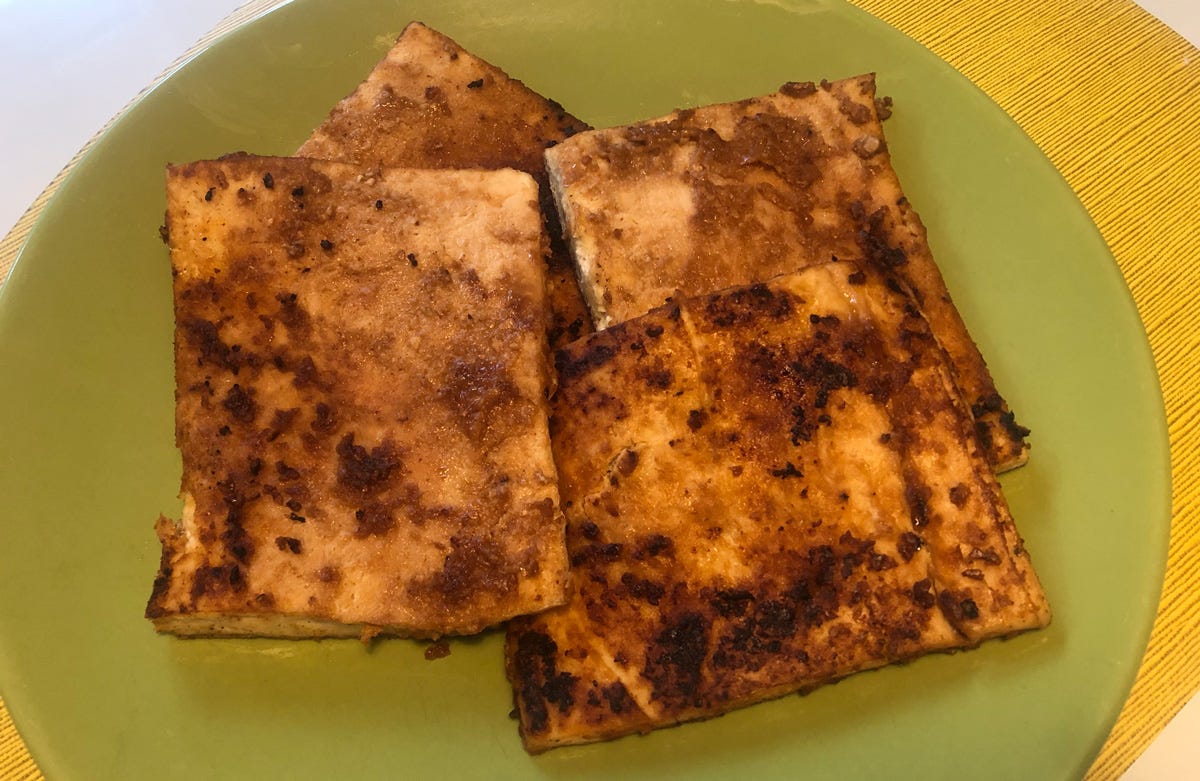The Magnet 0003 — Confounding Dice
Confounding dice, forcing functions, pan-fried miso-encrusted tofu, a music broadcast for extraterrestrials, and more
Welcome to the third issue of The Magnet! A big thank you to everyone who has subscribed, especially when I’m just getting started. It means a lot.
If you’re a non-paying subscriber, this will be your final free full issue. After that, you’ll get occasional public posts but will miss out on a lot of exclusive subscriber content. If you like what you’ve seen so far, I hope you’ll subscribe to support the creation of this newsletter. You can get a yearly subscription to The Magnet at a 30% introductory rate by clicking the button below:
MIND BOGGLER
My fascination with these confounding dice

Jack Vance’s Tales of the Dying Earth trilogy is set billions of years in the future when our sun is a red orb on the verge of blinking out. Earth’s few thousand remaining inhabitants practice different kinds of magic, including a “strange abstract lore” called “mathematics”:
"Within this instrument… resides the Universe. Passive in itself and not of sorcery, it elucidates every problem, each phase of existence, all the secrets of time and space… where equations fall away to elements like resolving chords, and where always prevails a symmetry either explicit or multiplex, but always of a crystalline serenity."
Nontransitive dice feel like magic to me. I first heard mention of them in William Poundstone’s 2005 book Fortune’s Formula, where he recounted a 1968 meeting between Warren Buffet and the mathematician/hedge fund manager Edward O. Thorp:
Thorp and wife met Buffett and wife for a night of bridge at the Buffett’s home in Emerald Bay, a community a little down the coast from Irvine. Thorp was impressed with Buffett’s breadth of interests. They hit it off when Buffett mentioned nontransitive dice, an interest of Thorp's. These are a mathematical curiosity, a type of “trick” dice that confound most people's ideas about probability.
That was all Poundstone had to say about them, but I was intrigued and looked them up. At first glance, nontransitive dice look like ordinary dice, but you can see how they are numbered differently:

What makes these dice special? Here’s a scenario that reveals their surprising property:
Show your friend three colored dice. Point out that they are not like regular dice.
Ask your friend to select a die. If they choose black, pick red. Roll the dice 20 or 30 times and keep score. You will win about ⅔ of the rolls.
Now give your friend a chance for a rematch. Your friend will probably ask for the red die since it beat the black die. Give it to them, and select the yellow die for yourself. You’ll win about 7/12 of the rolls.
There’s nothing remarkable about this so far. But what happens next is the part that “confounds most people's ideas about probability.”
Your friend will likely think, “If the red die beats the black die, and the yellow die beats the red die, then the yellow die must be the strongest die.” They will choose yellow and you’ll select the black die. And once again, you will win about 7/12 of the rolls.

Red beats black. Black beats yellow. Yellow beats red!
In fact, no matter which of the three dice your friend picks, you can always pick one that will beat it! It’s like playing Rock Paper Scissors and knowing in advance which one your friend will use. How can this be possible?

Take a look at the figure above. It shows the outcomes for all 36 possible rolls between each pair of dice. Red beats black 25 out of the 36 possibilities. Yellow beats red 21 out of 36. Black beats yellow 21 out of 36. Even though this figure explains why the dice behave as they do, they still feel like magic to me.
I made a 3D model of the dice and printed them on my 3D printer (they are in the photo at the top). You can also make your own using square craft cubes or order pre-made sets online.

Many different kinds of nontransitive dice have been invented over the years. Wikipedia has a good article describing them.
(Portions of this were adapted from my book, Maker Dad)
NEWSLETTER HIGHLIGHTS
Every issue of the Lifehacker newsletter has at least one or two tips I find useful. The 13 Aug issue links to Claire Lower’s article about a versatile, cheap kitchen tool — a brick wrapped in foil:
You Need a Kitchen Brick
What do you do with the brick once it is wrapped? You set it on top of things and hit things with it, obviously.
For starters, you can make chicken under a brick (or two bricks), but once you’ve finished that I think you’ll find that many meats benefit from a little pressure up top. Bacon, for instance. A brick keeps your strips of cured pork flat while they fry, preventing portions from curling up away from the pan, leaving you with bacon that is both burnt and raw. It can also help you get a faster, more even sear on a steak, chop, or thick burger, though I would not try it with a thin smash burger—that sticks to the pan just fine after an initial pressing.
A foil-wrapped brick is also handy if you need to press tofu, or sandwiches, or anything that needs a little help draining or setting overnight. If a recipe tells you to “weigh it down with soup cans” you can use your handy brick. You can also use it as a meat tenderizer or stand-in mallet, which feels powerful.
Maker Mind is a weekly neuroscience-based newsletter about decision making, continuous learning, thinking, creativity, and productivity. The 20 Aug issue discusses the Planning Fallacy (the tendency to underestimate the time it takes to complete a project, even when you take the Planning Fallacy into account) and 5 ways to overcome it. The 5 ways include taking an outside view, defining your priorities, questioning your motivations, managing your time, and performing a pre-mortem:
Before starting a project, ask why it failed
A pre-mortem is an exercise where we imagine that a project has failed, and where we work backward to determine what could have led to the failure. Imagine that the project was late: What could have caused the delay?
Designer Jonathan Hey’s Sketchplanations explains one thing a week as simple hand-drawn sketches. Hey’s 20 Aug sketch explains “forcing functions,” which are design features that keep us from doing something wrong or dangerous:
What’s a forcing function?
Forcing functions are a super way to help make things foolproof, or better, errorproof — as all of us make mistakes with designed things without being fools. You may have used your own forcing function when, in an attempt to make sure you remember your passport or tickets before a flight, you put them directly in front of the door so you couldn’t open it without noticing them. That little dialogue that asks you if you want to save your changes before closing your work, that’s a forcing function too.
My first memory of understanding a forcing function was when working with a giant machine capable of cutting through 100 pieces of paper at a time. The two buttons to operate it were on opposite sides of the machine. I couldn’t start the machine without spreading my arms out wide. There was then no way to also accidentally have your fingers in with the paper and near the blades when it started. Smart.
RECIPE
Pan-fried miso-encrusted tofu

Over the past several months, I’ve been experimenting with ways to cook tofu. So far, everyone in the family likes my pan-fried miso-encrusted tofu recipe the best. But we don’t agree on one point — whether or not the tofu should be frozen and thawed in advance. Years ago I learned you can add a lot of chewiness and texture to a block of tofu if you freeze it for 24 hours, let it thaw, and gently squeeze out most of the water. I prefer it this way. My wife and daughter would rather eat this dish using unfrozen tofu. But either way I make it, everyone at the table eats every last crumb.
Ingredients:
1 lb block of extra firm tofu
Olive oil
Paprika
Sea salt
Pepper
2 tbs red miso paste
Instructions:
Using a small bowl, mix miso with enough water to make a thin paste.
Heat a tablespoon of olive oil in a large frying pan.
Cut the tofu into 4 slices. (Here’s a photo of the slices.)
Brush one side of the tofu slices with olive oil and season with salt, pepper, and paprika. (Photo)
Put tofu seasoning-side-down in the frying pan and cook on medium-high heat for about 5 minutes (if you are using the frozen-thawed tofu) or about 10 minutes (if you are using fresh tofu).
While tofu is frying, use spoon to ladle a dollop of the miso sauce onto the top of each slice. Use the spoon to spread the sauce evenly on the slices.
With a spatula, remove the slices and set them on a plate.
Add another tablespoon of olive oil to the frying pan and put the tofu, miso-side-down into the pan.
Cook on medium-low heat for about 3 minutes, until the miso sauce looks crusty.
Tofu retains heat for a long time so be careful when taking your first bite!
LONGSHOTS
John Shepard spent 30 years trying to contact aliens

After John Shepherd was abandoned as a child by his parents, he moved in with his grandparents in rural Michigan, converting their home into a laboratory for contacting aliens. For 30 years he DJ’d a nightly radio show for extraterrestrials, treating them to Afropop, jazz, and1970s German electronic music, transmitted into deep space using a wondrous assemblage of electronic equipment scavenged over decades. Shepherd is the subject of an engrossing 15-minute documentary by Matthew Killip, called “John Was Trying to Contact Aliens,” which won Sundance’s “Short Film Jury Award: Non-fiction” in 2020. The last few minutes of the film are a joyful surprise. Watch the trailer here.
QUOTE
“It is as easy to deceive oneself without perceiving it as it is difficult to deceive others without their perceiving it.” — François duc de La Rochefoucauld, Maximes (1664)
François VI, duc de La Rochefoucauld (1613-1680) was the most famous writer of maximes, defined by Britannica as a “French literary form of epigram that expresses a harsh or paradoxical truth with brevity.”
The Magnet is written and produced by Mark Frauenfelder and edited by Carla Sinclair.




The mystery of the foil-wrapped brick solved! This has bugged me for years.
I love the transitive dice. My mind was also blown when I heard of them. Singing Banana has a great video on them.
https://youtu.be/zWUrwhaqq_c